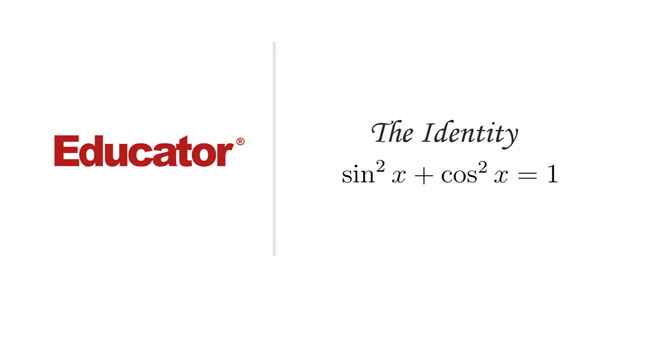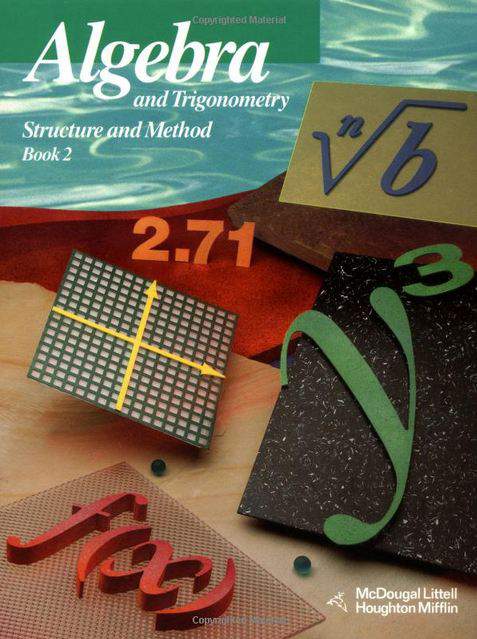Connecting...

This is a quick preview of the lesson. For full access, please Log In or Sign up.
For more information, please see full course syllabus of Trigonometry
For more information, please see full course syllabus of Trigonometry
Trigonometry Pythagorean Identity
Lecture Description
The most important identity in trigonometry is the Pythagorean identity. It comes from the Pythagorean theorem and it says that the sum of the squares of sine and cosine of the same angle is always equal to one. You can use the Pythagorean theorem to prove the Pythagorean identity or the other way round. This identity is very useful and can be used to prove some other trigonometric identities. In this lecture you'll also get to practice how to find angle if you are given the cosine and why it is important to also know the quadrant of the angle.
Bookmark & Share
Embed
Share this knowledge with your friends!
Copy & Paste this embed code into your website’s HTML
Please ensure that your website editor is in text mode when you paste the code.(In Wordpress, the mode button is on the top right corner.)
×
Since this lesson is not free, only the preview will appear on your website.
- - Allow users to view the embedded video in full-size.
Next Lecture
Previous Lecture










































 Answer Engine
Answer Engine



1 answer
Tue Aug 5, 2014 3:52 PM
Post by Farhat Muruwat on August 1, 2014
This is really fundamental compared to what they teach in school. I need help with trig identities and examples!
3 answers
Mon Dec 22, 2014 9:15 PM
Post by Rand Mahmood on December 28, 2013
When you check the answer on the second question (practice questions) it gives you .9473, while the actual answer is .8827. Can you take a look at it?
1 answer
Fri Jul 5, 2013 9:29 AM
Post by Manfred Berger on June 28, 2013
I have encountered a bit of a bump in the road with example 3. Is there a way to navigate around the fact that the denominators vanish for multiples of pi?
1 answer
Sat Nov 3, 2012 6:16 PM
Post by Daisy soto on November 1, 2012
I am having trouble with the video...it will not load to the 1st example
1 answer
Tue Apr 2, 2013 12:51 PM
Post by Dr. William Murray on October 30, 2012
Hi Carri,
The idea here is that you can read the example problems in the video and then stop the video and try to work them out on your own. Then you can restart the video and see if your answers agree with mine. So that's five practice problems.
You're probably taking a trig class in high school or college right now. (These Educator videos aren't meant to be stand-alone courses; they're meant to be supplements to regular courses.) So you probably have a textbook with lots of practice problems, and hopefully, the answers to the odd problems are in the back.
For specific homework questions, you can try posting on here. If they're relevant to the video lectures and I think other people would benefit, I'll answer them as I have time. If you're just looking for help with your own stuff, I recommend talking to your teacher or getting a local tutor -- it's easier to work specific questions out face to face.
Thanks for taking trigonometry!
Will Murray
1 answer
Tue Apr 2, 2013 12:48 PM
Post by carri campbell on October 30, 2012
I'm disappointed in this already. Where are the practice problems? I have specific homework questions I would like to ask, is that a possibility?
1 answer
Wed Aug 22, 2012 1:25 PM
Post by jim kwon on August 17, 2012
what if it is sin^2 40 degree + cos^2 40 degree?
1 answer
Last reply by: Sandra Bruce
Mon Jun 4, 2012 2:17 PM
Post by David Burns on August 17, 2011
Again, the quick notes section on this page does not correspond to the lecture - it's one off. Please fix this, it's kind of annoying.
1 answer
Last reply by: Marco Zendejo
Tue Jun 21, 2011 10:48 PM
Post by Donald Bada on June 10, 2011
why is the x place between the sin and x instead of after the x?
1 answer
Tue Apr 2, 2013 12:50 PM
Post by Greg Banta on July 14, 2010
Can't here sound on this one :(
I heard sound on others